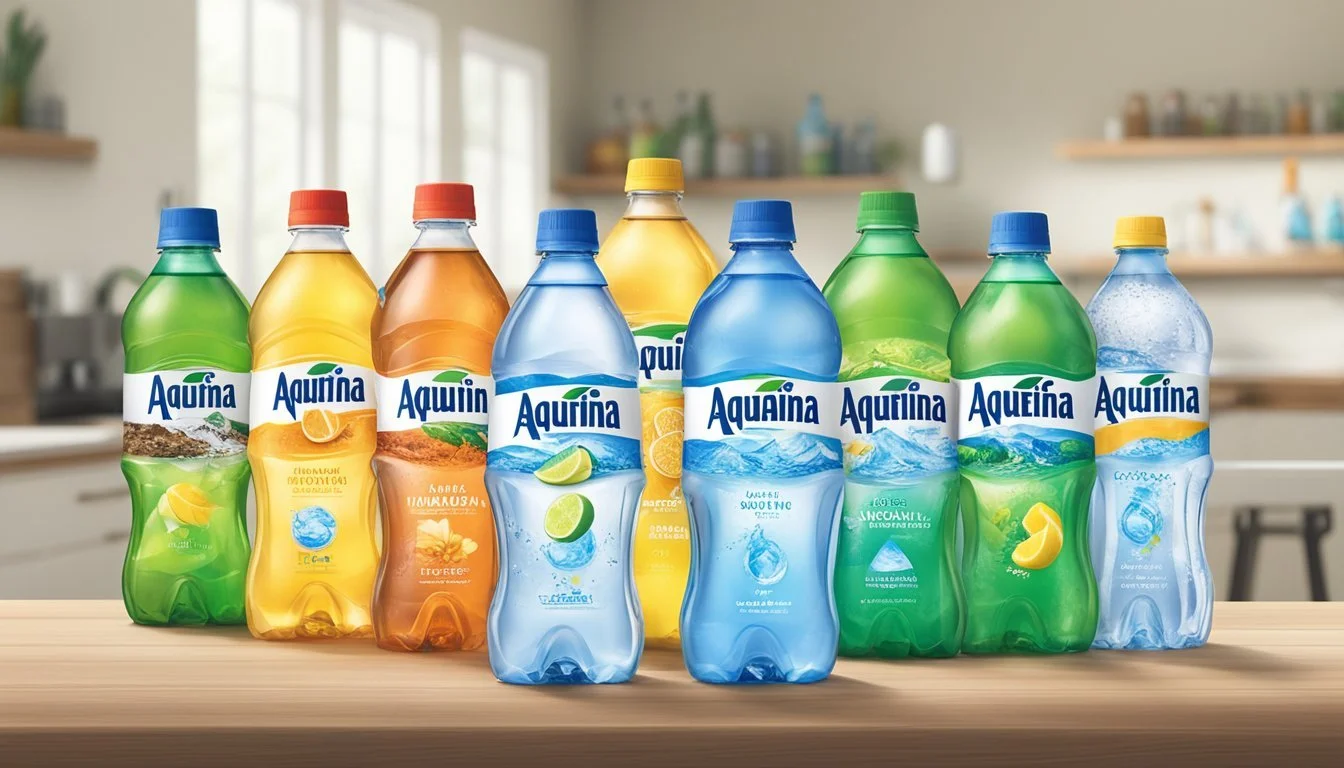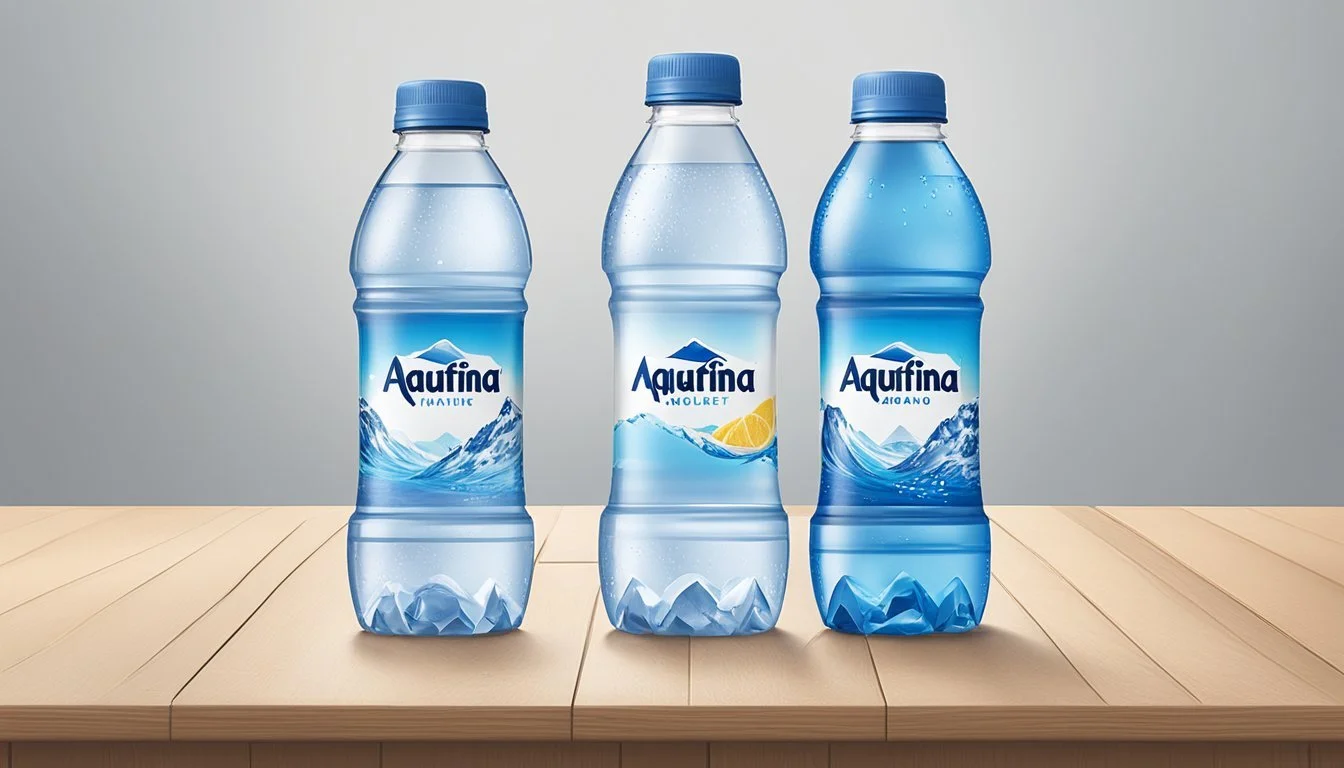Aquafina vs. Hawai’i Volcanic
Comprehensive Comparison
When it comes to choosing bottled water, the options can be overwhelming. Aquafina and Hawai’i Volcanic stand out as two distinct brands, each offering unique qualities. Aquafina, known for its rigorous HydRO-7 filtration process, ensures a purified drinking experience by reducing substances that most other bottled waters leave in.
Hawai’i Volcanic brings a different take to the market. It capitalizes on its source, volcanic springs, to offer naturally alkaline water with a balanced mineral composition. This sets it apart for those who prefer water with a distinct natural origin and added health benefits.
For those concerned with purity, Aquafina might be the better choice, while those looking for natural mineral content may lean towards Hawai’i Volcanic. This comparison will delve deeper into what makes each brand unique and help you decide which is worth your purchase.
Understanding Bottled Water
Bottled water comes in various types, each distinguished by its composition, source, and purification methods. Key factors include mineral composition, water source, and purification processes.
Composition and Types of Bottled Water
Bottled water can be categorized into several types based on its composition and mineral content. Spring water is sourced from natural springs and is often rich in minerals. Purified water undergoes extensive filtration processes like reverse osmosis or distillation to remove impurities. Mineral water contains naturally occurring minerals and must adhere to strict guidelines regarding its mineral content.
Alkaline water has a higher pH level and often includes added electrolytes to enhance hydration. Artesian water is sourced from confined aquifers where the water pressure naturally flows to the surface. These types offer different health benefits and taste profiles based on their unique compositions.
Sourcing and Origin
The source of bottled water significantly affects its quality and taste. Natural spring water is collected from underground springs, ensuring a naturally filtered product. In contrast, some bottled waters are sourced from municipal water supplies, undergoing purification to meet bottled water standards.
Artesian water is drawn from aquifers trapped beneath rock layers, providing a potentially unique mineral balance. The origin of the water, whether from protected natural reserves or controlled municipal sources, influences consumer trust and preferences. Brands often emphasize their water’s pristine origins to appeal to health-conscious consumers.
Water Purification Techniques
Various purification methods are employed to ensure bottled water safety and quality. Reverse osmosis is a common technique that forces water through a semi-permeable membrane, removing contaminants. A multi-step purification process might include filtration, reverse osmosis, and additional sterilization steps.
Distillation involves boiling water and then condensing the steam, effectively removing most impurities. Another technique, ultraviolet light (UV) treatment, uses UV radiation to sterilize water, while ozone sterilization adds ozone gas to eliminate bacteria and viruses. Each purification process aims to produce clean, safe bottled water, often tailored to retain or add desired mineral content for enhanced taste and health benefits.
Health and Safety Standards
Health and safety standards are vital considerations for evaluating bottled water. Factors such as pH levels, safety and purity testing, and regulatory compliance are crucial in determining the overall quality and safety of a brand.
PH Levels and Acidity
The pH level of water indicates its acidity or alkalinity. Aquafina usually has a pH level around 5.5 to 7, making it slightly acidic to neutral. Hawai’i Volcanic, on the other hand, typically boasts a higher pH level of 7.7 to 8.4, which is alkaline.
Alkaline water maintains a reputation for neutralizing stomach acid and providing other possible health benefits. It’s important to note that while alkaline water can be beneficial, excessively high pH levels might not be suitable for everyone. Both brands maintain their specific pH levels to ensure they meet consumer preferences for acidity or alkalinity.
Safety and Purity Testing
Both Aquafina and Hawai’i Volcanic undergo rigorous safety and purity testing to provide safe drinking water free from contaminants. Aquafina uses a 7-step HydRO-7 filtration process that includes reverse osmosis, ensuring the removal of a wide range of impurities.
Hawai’i Volcanic is sourced from natural volcanic springs, which adds a layer of natural filtration. The brand implements thorough testing to ensure the water is free from microplastics, heavy metals, and other harmful substances. Regular reports and continuous monitoring help in maintaining high purity standards, ensuring the safety and health benefits of their products.
Regulatory Compliance
Compliance with regulatory standards is essential for bottled water brands to ensure public safety. Aquafina follows guidelines set by the Environmental Protection Agency (EPA) and the Food and Drug Administration (FDA), ensuring that their water meets safety criteria.
Hawai’i Volcanic adheres to both EPA and FDA regulations and follows additional local and international guidelines, setting a comprehensive standard for quality. Both brands must pass periodic inspections and provide detailed reports on water quality to remain compliant, thereby assuring consumers of their commitment to safety and quality.
Aquafina and Hawai’i Volcanic prioritize their respective health and safety standards through detailed practices and regulations, ensuring consumers have access to clean and safe drinking water.
Comparative Analysis
This section looks at Aquafina and Hawai’i Volcanic in terms of their quality and taste profiles, as well as their production and environmental implications.
Aquafina vs. Hawai’i Volcanic Water
Aquafina utilizes a 7-step HydRO-7 filtration process to purify its water. The brand claims that this process effectively removes most substances that other bottled waters might leave behind. Hawai’i Volcanic, on the other hand, sources its water from Hawaiian volcanic springs.
Hawai’i Volcanic water is naturally filtered through volcanic rock, which adds beneficial minerals and a unique flavor. Both brands aim to offer pure drinking water, but their methods for achieving this differ significantly.
Quality and Taste Profiles
Aquafina’s rigorous filtration results in a water product that is extremely pure, with minimal mineral content. This makes its taste very neutral and clean. Hawai’i Volcanic water contains naturally occurring minerals that give it a distinct, slightly alkaline flavor. The pH level for Hawai’i Volcanic typically hovers around 8-8.5, while Aquafina maintains a neutral pH of about 7.
Taste tests often highlight the mineral flavor in Hawai’i Volcanic water, which some consumers find particularly refreshing. In contrast, Aquafina is usually preferred by those who favor a more neutral taste.
Production and Environmental Implications
Aquafina primarily uses plastic bottles, which raises concerns about environmental impact. The carbon footprint associated with the production and disposal of plastic bottles is a critical issue for many consumers.
Hawai’i Volcanic positions itself as an eco-friendly brand, often using biodegradable or recyclable packaging. The company also emphasizes its sustainable water sourcing practices, utilizing natural springs without depleting local resources.
In summary, while Aquafina focuses on achieving high levels of purity through advanced filtration, Hawai’i Volcanic offers naturally sourced water rich in minerals and advocates for environmentally conscious production methods.
Consumer Experience and Accessibility
When choosing between Aquafina and Hawai’i Volcanic, factors such as brand recognition, packaging design, and availability play a crucial role in consumer decision-making. Each brand offers unique attributes that can significantly influence purchasing preferences.
Brand Recognition and Loyalty
Aquafina is a well-established brand owned by PepsiCo. Its extensive marketing campaigns have cemented its place in households across the globe. The brand is recognized widely due to consistent media exposure and strong market presence.
Hawai’i Volcanic is less known but has a dedicated niche following. It appeals primarily to consumers interested in premium, eco-friendly products. Its unique brand story, tied to volcanic filtration processes and Hawaiian heritage, fosters a distinct brand loyalty among environmentally conscious buyers.
Packaging and Design
Aquafina utilizes clear plastic bottles with simplistic, clean design. The blue label and clear bottle make it easily recognizable. While the bottle design is functional, it doesn’t stand out significantly in terms of innovation.
Hawai’i Volcanic, on the other hand, emphasizes sustainability in its packaging. The bottles are made from recycled materials, often featuring sleek, modern designs that highlight the brand's eco-friendly ethos. This appeals to consumers who prioritize environmental responsibility in their purchases.
Market Availability and Pricing
Aquafina benefits from its extensive distribution network. It's widely available in grocery stores, convenience stores, and vending machines. The price is relatively affordable, making it easily accessible to the general public.
Hawai’i Volcanic is typically found in specialty stores and high-end grocery stores. Its pricing is higher compared to Aquafina, reflecting its premium positioning and sustainable practices. Availability might be limited in some regions but it caters well to a specific market willing to pay a premium for quality and sustainability.
Additional Considerations
When comparing Aquafina and Hawai’i Volcanic, it's important to look at factors like enhanced and flavored water options, lifestyle and hydration needs, and educational aspects, such as water sommelier insights.
Enhanced and Flavored Water Varieties
Aquafina offers a range of enhanced and flavored waters. These varieties include added electrolytes and flavors such as lemon and berry.
Hawai’i Volcanic, on the other hand, primarily focuses on its natural volcanic source. It does not heavily market flavored or enhanced water options, which might be a consideration for those seeking more variety in their hydration choices.
Lifestyle and Hydration Needs
Aquafina aims to cater to a broad audience with its accessible price point and widespread availability. Their products feature options for both standard and enhanced hydration needs, making it suitable for an active lifestyle. Electrolyte-enhanced versions help athletes and active individuals maintain hydration.
Hawai’i Volcanic positions itself as a premium bottled water choice. Its unique volcanic filtration process appeals to consumers interested in the health benefits of natural minerals. This brand might be better suited for individuals who prioritize naturally sourced water in their lifestyle.
Educational Aspects
Aquafina advocates transparency in its purification process, giving consumers insights into the HydRO-7 filtration method. This educational approach helps build trust and informs customers about the purity of the water they consume.
Hawai’i Volcanic's educational focus centers around its unique volcanic filtration and the geological aspects of Hawai'i. Water sommeliers often highlight its natural mineral content and pH balance. This focus adds an educational value that appeals to consumers interested in the natural origins and health benefits of their water.




